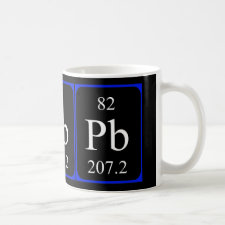
Authors: Guo B, Deng F, Zhao Y, Luo XB, Luo SL, Au CT
Article Title: Magnetic ion-imprinted and -SH functionalized polymer for selective removal of Pb(II) from aqueous samples.
Publication date: 2014
Journal: Applied Surface Science
Volume: 292
Page numbers: 438-446.
DOI: 10.1016/j.apsusc.2013.11.156
Alternative URL: http://www.sciencedirect.com/science/article/pii/S0169433213022459
Abstract: A magnetic ion-imprinted polymer (Fe3O4@SiO2-IIP) functionalized with -SH groups for the selective removal of Pb(II) ions from aqueous samples was synthesized by surface imprinting technique combined with a sol-gel process using 3-mercaptopropyl trimethoxysilane as monomer, tetraethyl orthosilicate as cross-linking agent, and Pb(II) ion as template. The Fe3O4@SiO2-IIP was characterized by infrared spectroscopy, scanning electron microscopy, transmission electron microscopy, and energy dispersive spectrometry. Fe3O4@SiO2-IIP showed higher capacity and selectivity than that of Fe3O4@SiO2-NIP. The effects of initial concentration of Pb(II) and pH of medium on adsorption capacity of Fe3O4@SiO2-IIP were studied. The experimental data fits well with the Langmuir adsorption isotherm. The maximum Pb(II)-sorption capacity calculated from Langmuir isotherm is 32.58 mg/g and 16.50 mg/g for Fe3O4@SiO2-IIP and Fe3O4@SiO2-NIP, respectively. Kinetics studies show that the adsorption process obeys a pseudo-second-order kinetic model with high correlation coefficient (R2 = 0.9982). The separation factor of Fe3O4@SiO2-IIP for Pb(II)/Cu(II), Pb(II)/Zn(II), and Pb(II)/Co(II) are 50.54, 52.14, and 37.39, respectively. The adsorption thermodynamic parameters Δ G, Δ H and Δ S were -4.98 kJ/mol, 3.27 kJ/mol and 28.84 J/mol/K, respectively. In addition, the spent Fe3O4@SiO2-IIP can be refreshed by simple washing with aqueous HCl solution, and there is no significant decrease in adsorption capacity after a test of up to five cycles, demonstrating that the Fe3O4@SiO2-IIP is stable and reusable
Template and target information: lead ion, Pb(II)
Author keywords: Surface imprinting technique, Magnetic ion-imprinted polymer, Pb(II), selectivity



Join the Society for Molecular Imprinting

New items RSS feed
Sign-up for e-mail updates:
Choose between receiving an occasional newsletter or more frequent e-mail alerts.
Click here to go to the sign-up page.
Is your name elemental or peptidic? Enter your name and find out by clicking either of the buttons below!
Other products you may like:
 MIPdatabase
MIPdatabase









